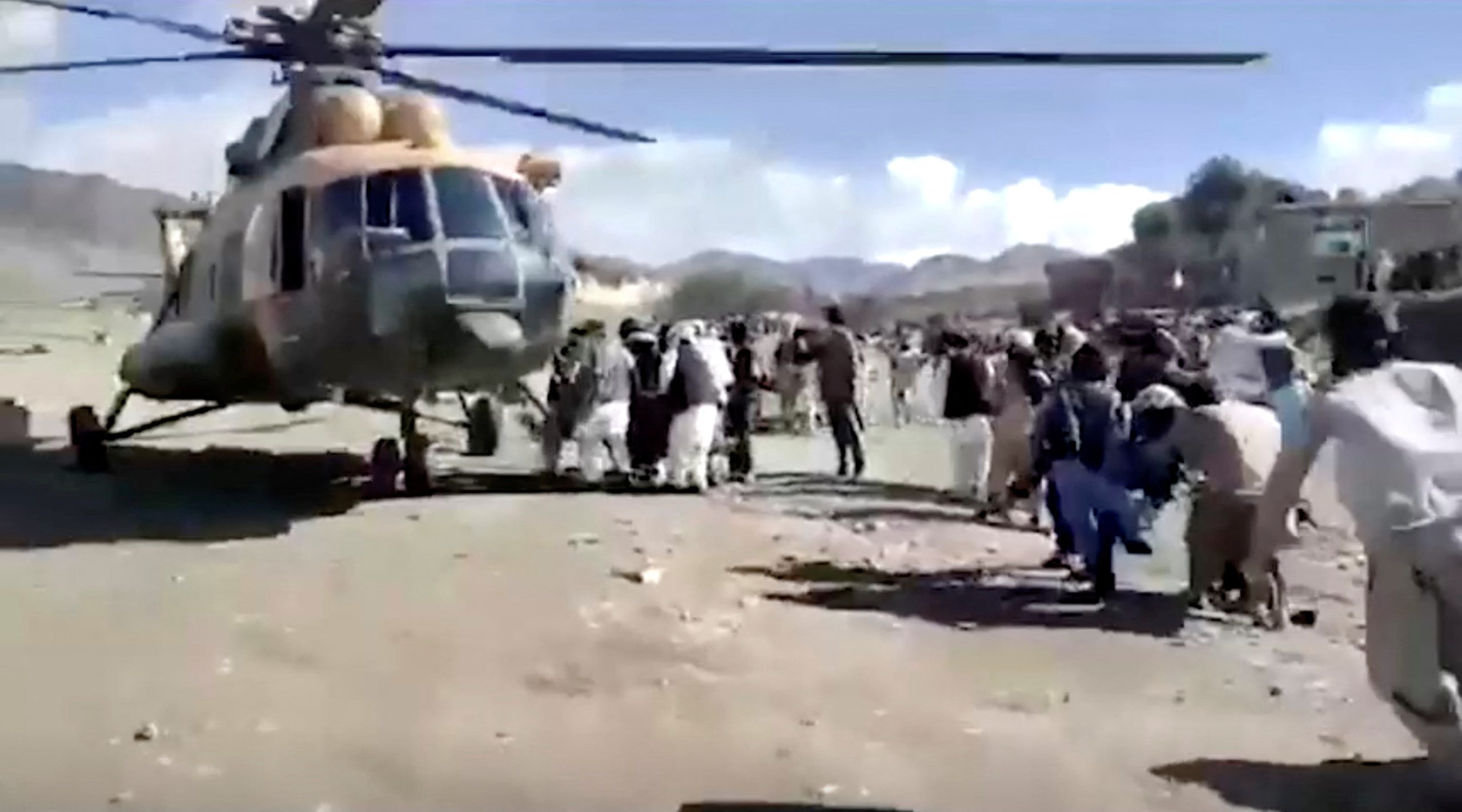
[elfsight_social_share_buttons id=”1″]
The death toll from an earthquake in Afghanistan on Wednesday hit 1,000, disaster management officials said, with more than 600 injured, and the toll is expected to grow as information trickles in from remote mountain villages.
Houses were reduced to rubble and bodies swathed in blankets lay on the ground, photographs on Afghan media showed.
Helicopters were deployed in the rescue effort to reach the injured and fly in medical supplies and food according to interior ministry official Salahuddin Ayubi.
“The death toll is likely to rise as some of the villages are in remote areas in the mountains and it will take some time to collect details,” he said.
Wednesday’s quake was the deadliest in Afghanistan since 2002. It struck about 27 miles from the southeastern city of Khost, near the border with Pakistan, the U.S. Geological Survey (USGC) said.
Disaster management officials said at least 1,000 are dead and 600 injured. However, local officials put the number of injured higher.
“1,000 dead, 1,500 injured, and this number might go up, many families have been lost. Injured people have been taken to Kabul and Gardez,” Mohammad Amin Hozaifa, information and culture director of Paktika, told Reuters.
Most of the confirmed deaths were in the eastern province of Paktika, where 255 people were killed and more than 200 injured, Ayubi added. In the province of Khost, 25 were dead and 90 had been taken to hospital.
Haibatullah Akhundzada, the supreme leader of the ruling Taliban, offered his condolences in a statement.
Mounting a rescue operation will prove a major test for the Taliban, who took over the country last August and have been cut off from much international assistance because of sanctions.
Shaking was felt by about 119 million people in Pakistan, Afghanistan, and India, the EMSC said on Twitter, but there were no immediate reports of damage or casualties in Pakistan.
The EMSC put the earthquake’s magnitude at 6.1, though the USGC said it was 5.9.
Adding to the challenge for Afghan authorities is recent flooding in many regions, which the disaster agency said had killed 11, injured 50, and blocked stretches of highway.
The disaster comes as Afghanistan grapples with a severe economic crisis since the Taliban took over as U.S.-led international forces withdrew following two decades of war.
In response to the Taliban takeover, many nations imposed sanctions on Afghanistan‘s banking sector and cut billions of dollars worth of development aid.
Humanitarian aid has continued, however, with international agencies, such as the United Nations, continuing operations.
The U.N.’s Office for the Coordination of Humanitarian Affairs (UNOCHA) said Afghanistan had asked humanitarian agencies to help with rescue efforts, and teams were being sent to the quake-hit area.
A foreign ministry spokesman said the Taliban would welcome international help. Neighboring Pakistan said it was working to extend assistance.
Large parts of South Asia are seismically active because a tectonic plate known as the Indian plate is pushing north into the Eurasian plate.
In 2015, an earthquake struck the remote Afghan northeast, killing several hundred people in Afghanistan and nearby northern Pakistan.
In January, an earthquake struck western Afghanistan, killing more than 20 people.
Copyright 2022 Thomson/Reuters
